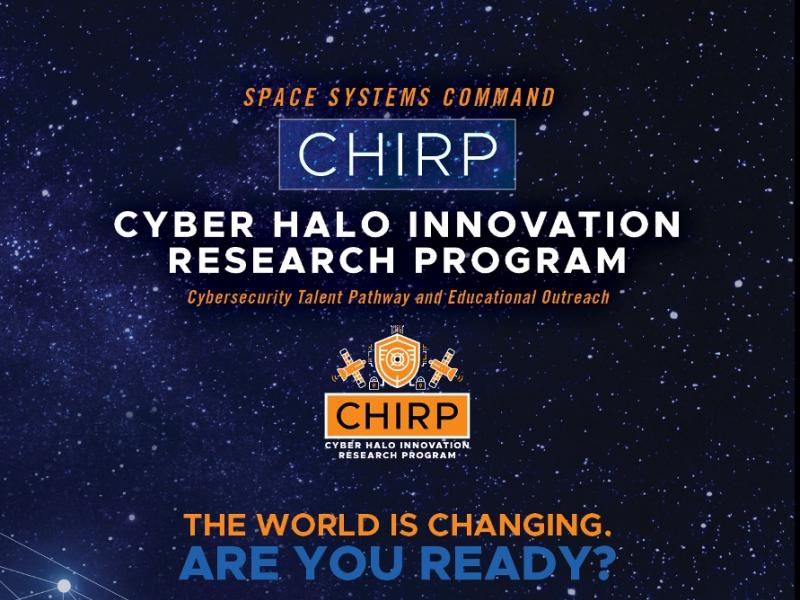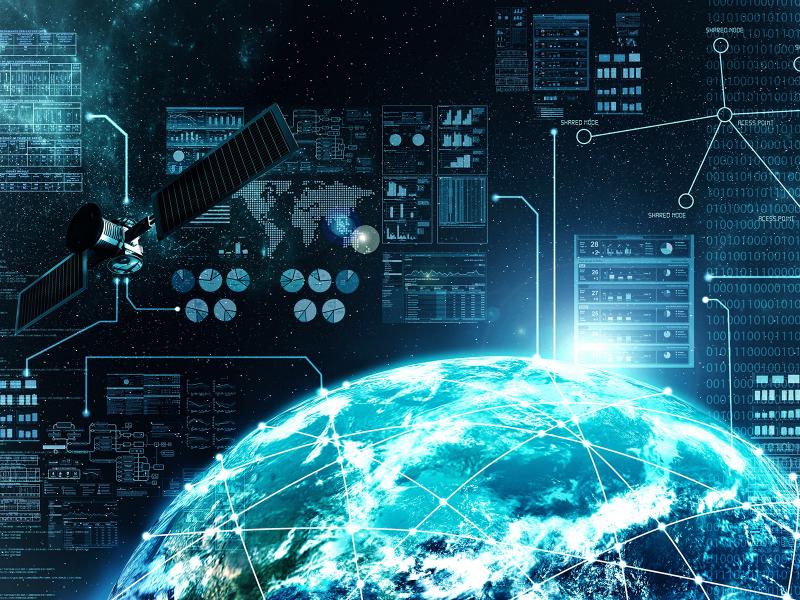
Cyber Halo Innovation
Research Program
Growing the space
cybersecurity workforce
The Cyber Halo Innovation Research Program, or CHIRP, is a collaboration between Pacific Northwest National Laboratory and U.S. Space Force's Space Systems Command. The program provides college students a two-year pathway to a cybersecurity career focused on space-based technologies.
(Image by Shannon Colson | Pacific Northwest National Laboratory)
The world is changing. Are you ready?
Cybercrime is a growing threat to space-based technologies, such as satellites and global positioning systems. To grow the cybersecurity workforce needed to help protect these important space systems, Pacific Northwest National Laboratory (PNNL) has teamed up with U.S. Space Force’s Space Systems Command (SSC) to create the Cyber Halo Innovation Research Program—or CHIRP.
CHIRP is a college-to-career program that brings together government, industry, and colleges and universities to provide students with a direct two-year pathway to a cybersecurity career at SSC or their industry partners. California State University, San Bernardino is the first higher education institution to join the effort.
“There is an urgent need for professionals with the specialized expertise to protect our mission-critical, space-borne assets from cyber threats by adversaries.” – Colonel Jennifer Krolikowski-Stamer, Chief Information Officer, Space Systems Command
The student experience
Students who participate in the career-preparation program receive two years of intensive training designed to equip them for jobs protecting the nation’s vital space-based technologies from cyber threats.
CHIRP participants:
- Work on cybersecurity-related research and development problems using tools and methods that are directly applicable to SSC;
- Participate in a cybersecurity internship at SSC, PNNL, or other industry partners;
- Complete a one-week professional development experience at PNNL
The training will open pathways for futures in information technology, computer science, intelligence (national security), network security, cyber analysis, incident response, cyber policy, data architecture, continuity of operations, data analytics, machine learning, artificial intelligence, secure software development, and other cybersecurity-related fields.

at Pacific Northwest National Laboratory. (Photo by Andrea Starr | Pacific Northwest National Laboratory)
Key Program Dates & Information
CHIRP applications open in January. Those who are selected will participate in the Summer Institute at PNNL Richland campus from May 20 to May 24, 2024. Visit PNNL’s careers page to learn more and view the current CHIRP postings, application requirements, and benefits.
Program Eligibility
Accepted students will begin the program during the summer before their junior year and will commit to a full two years of participation. To meet and maintain eligibility, students must:
- Maintain a 3.0 GPA in their major;
- Meet each semester with the CHIRP program manager or with an assigned advisor; and
- Participate in career, curriculum, and experience pathways and required CHIRP events, including the Summer Institute, research experiences, and a summer internship.
Academic and industry partners
CHIRP is a collaboration between PNNL, SSC, selected higher-education institutions, and industry partners that offers students access to a unique, two-year college-to-career program opportunity.
Learn More
If you’re interested in participating in CHIRP as a student or as an academic or industry partner, please contact us at CHIRP@pnnl.gov.


